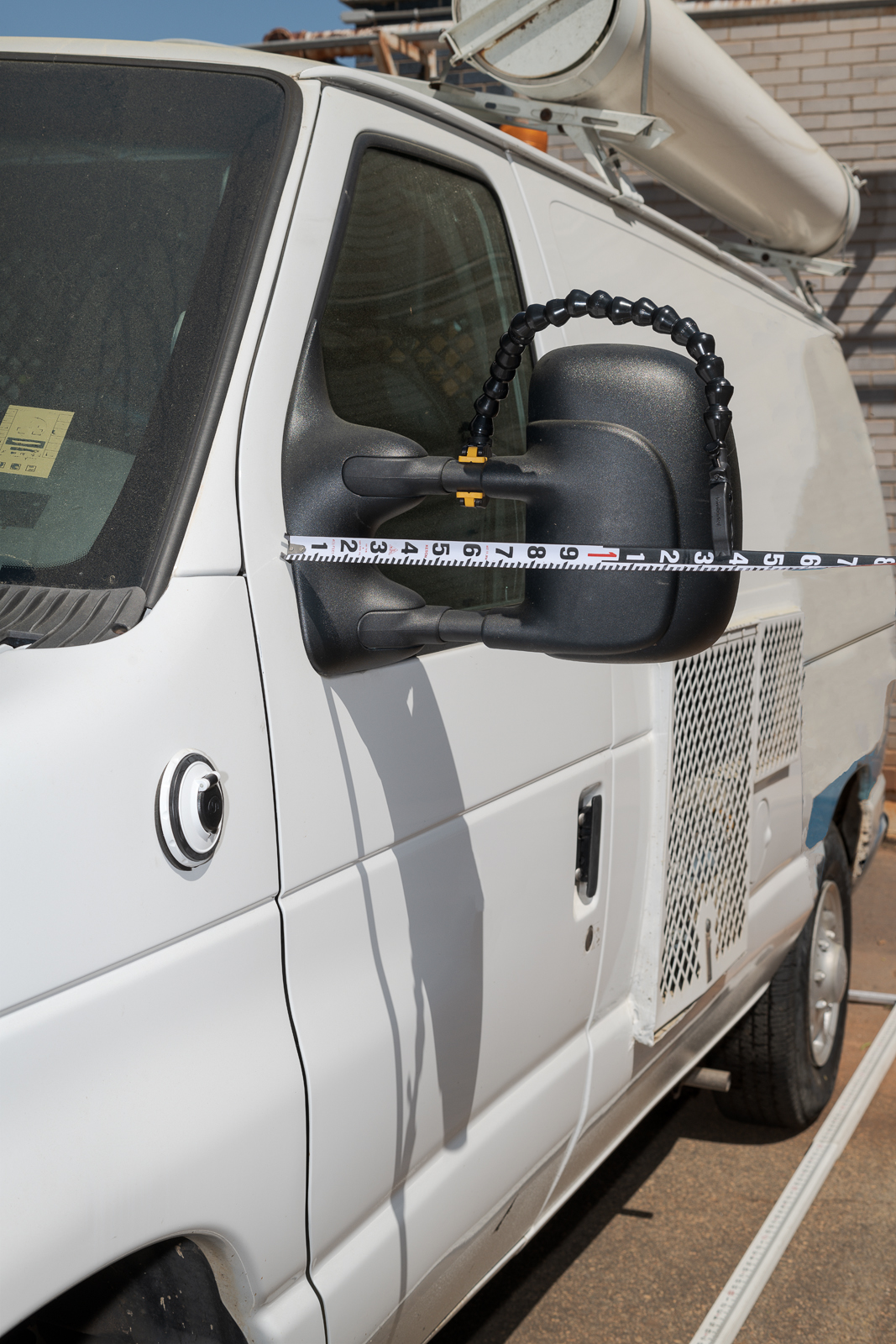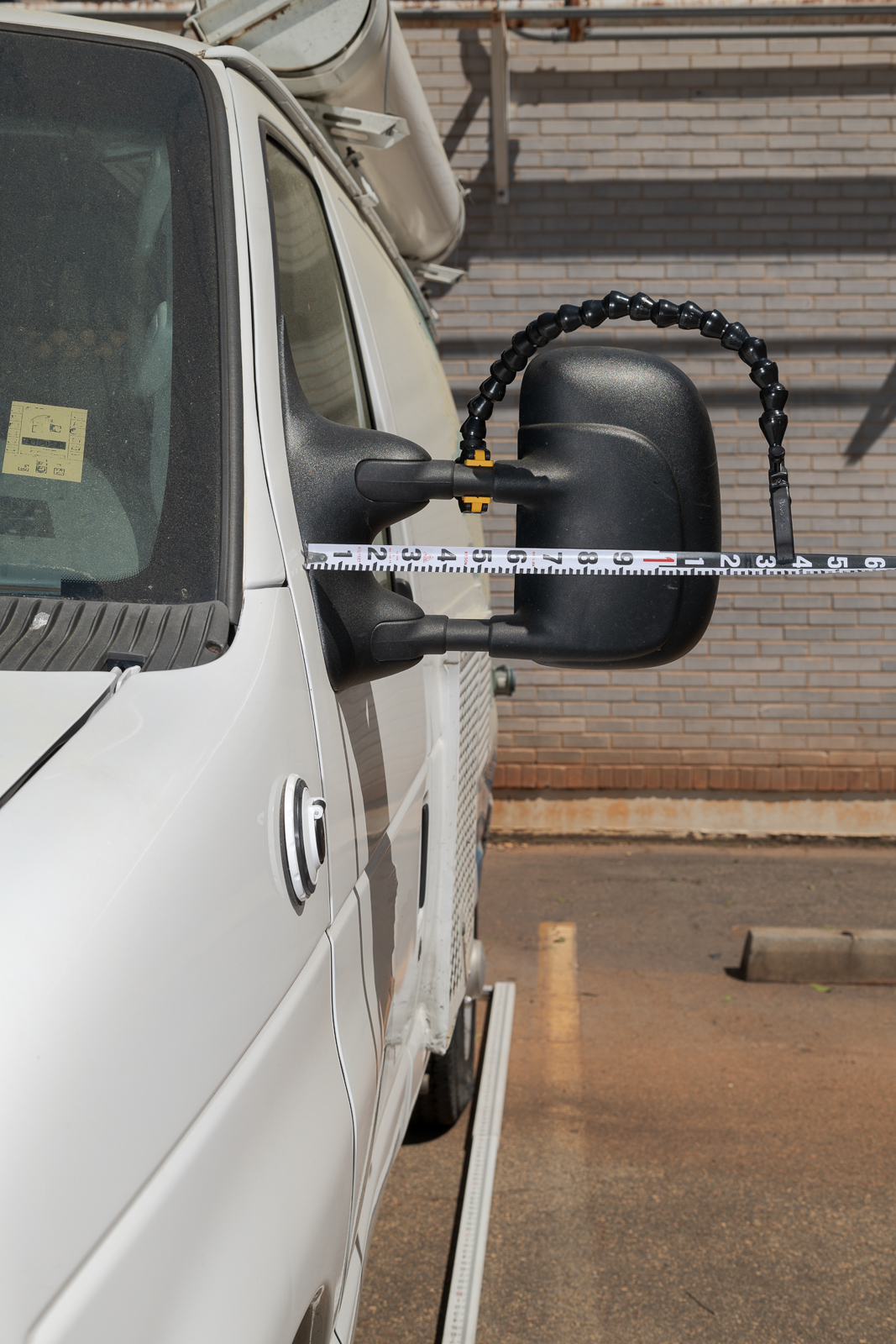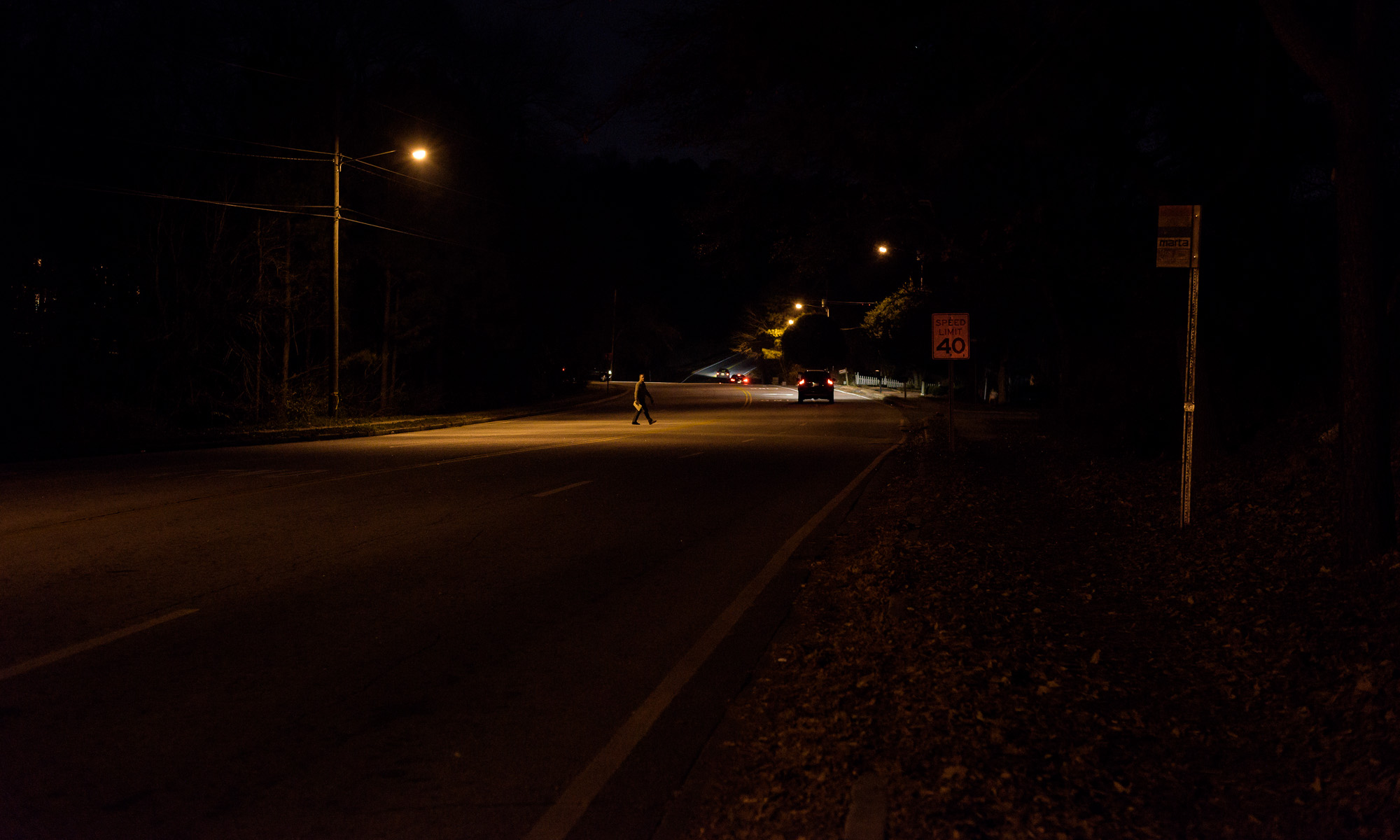Including a scale in a photograph is an excellent way to document dimensions. But it’s essential to properly position the camera to record an accurate measurement.
One of the most common mistakes made when photographing scales or rulers is making the photo from an angle. The camera lens must be perpendicular to the scale, both vertically and horizontally. A camera positioned too low or too high, and correspondingly tilted up or down, will result in parallax distortion. Worse is a horizontal offset that results in misleading measurements due to the angle of the camera to the scale markings.
Take this example made to show how far a mirror protruded from the side of a van. The first photo was taken at the proper scale height, but was at an angle to the scale. Note how different the reading appears in the second image with the camera perpendicular to the scale. The latter accurately showed the measurement. (Click on image to enlarge, then click on back arrow to return.)

-1- Make sure the pocket rod is parallel with the ground. Use something like a Wimberley Plamp clamped onto the upper mirror support arm to hold it at the proper height. Place the other end of the pocket rod firmly against the ground with enough pressure to hold the rod in proper position and angle.
-2- With the camera on a tripod, make sure the center of the lens is vertically level with the pocket rod.
-3- Move the tripod until the center of the lens is centered on pocket rod horizontally.
-4- Use a hot shoe bubble level or the in-camera level to make sure camera is level.
-5- Manually focus, or make sure your autofocus point is directly on the scale.
-6- Use a normal (50mm) or longer focal length to eliminate wide angle lens distortion. Macro lenses are ideal because of their flat field and edge-to-edge sharpness.
-7- Use fill flash to balance image, despite abundant sunshine.
Use scales, but take care to get the camera in position to show them accurately. Fortunately, you can check the results on your camera’s LCD (zoom the view if necessary) to make sure the dimension in the photograph matches the measurement you made. Fairly close isn’t accurate, and is misleading. A deceptive photo is worse than no photo at all.
